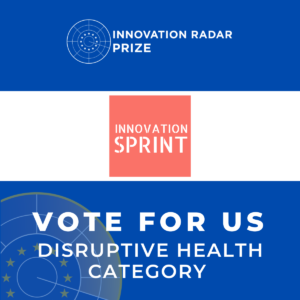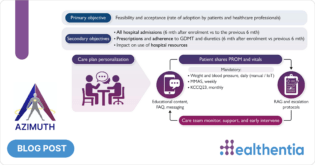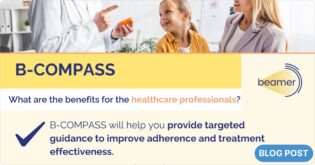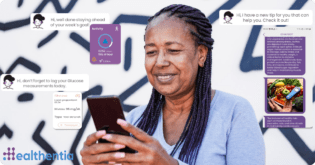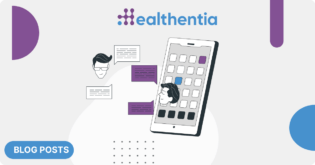
We are excited that Innovation Sprint is short-listed for the Innovation Radar Award on Disruptive Health, together with 9 other companies.
Since 2015 the European Commission has been awarding the annual Innovation Radar Prize to great EU-funded innovators, putting a spotlight on the high-potential innovations they are trying to get "out of the lab and into the market". Intelligence gathered by the Innovation Radar is used to identify innovators who can then compete for the prize.
The top innovation finalists are grouped into 3 categories of 10 each, out of a tremendous number of applications for the 2022 Innovation Radar Prize. The 3 categories are:
- Disruptive Health
- Purpose-driven & Green
- Kickstarter
The Innovation Radar Prize 2022 includes voting from the public, which will assist the jury in their search for the best innovation of 2022.
Innovation Sprint is one of the 10 candidates for the Innovation Prize of Disruptive Health and we are looking forward to receiving your vote here.
Why have we been selected as finalists?
 Sofoklis Kyriazakos, CEO of Innovation Sprint, explains the reasons that brought Innovation Sprint to the final of the Innovation Radar Prize 2022.
Sofoklis Kyriazakos, CEO of Innovation Sprint, explains the reasons that brought Innovation Sprint to the final of the Innovation Radar Prize 2022.
Innovation is part of our company name, but foremost it is part of our DNA. Our purpose to improve health outcomes and outperform existing therapeutic care-paths using innovative technologies, has been an exciting and long journey from the day we started until where we are now commercializing our novel MedTech product in this highly regulated and challenging domain. Our product Healthentia, is a certified Software as Medical Device that uses best of breed of Internet, IoT, AI, and Big Data technologies together with clinical and regulatory knowledge to support healthcare professionals to monitor their patients, through digital clinical pathways addressing chronic conditions. Healthentia has been used so far in patient cohorts with cancer, heart failure, COPD, Covid-19, HIV, and other conditions. The clinical evidence that has been captured so far demonstrates increased adherence to treatment and Quality of Life, while we are currently running clinical studies, in which we monitor endpoints like mortality and rehospitalization. In Belgium, we are already at level 2 of the mHealthBELGIUM pyramid link, which paves the way towards reimbursement. We have market authorization for Europe and we have finalized the PreSub evaluation from FDA for 510(k) clearance. This journey was strongly influenced by our research activities, many of them performed under EC R&D projects, which contributed to the inclusion of key innovations in Healthentia and bringing the product to another level; a level that is backed up by science. We are committed to continuously improving Healthentia to disrupt health, by outperforming traditional treatments, thus contributing to Good Health and Wellbeing, one of the key sustainability goals of the UN. In this trajectory, we will continue to improve Healthentia in a way to address demanding market needs, regulatory challenges, while implementing our purpose to use innovative technologies to improve health outcomes and outperform existing therapeutic care paths.
What are the key innovations so far?

Aristodemos Pnevmatikakis, R&D Director of Innovation Sprint, explains Healthentia smart services and the role of EU co-funded projects in implementing them.
Healthentia is a secure big data platform for patient data, providing two applications to its two categories of end-users: a) Patients use the mobile app to facilitate the collection of their data and delivery of info and feedback, and b) healthcare professionals use the portal app to setup studies or programs to monitor their patients both as a cohort, or as individuals. Both applications are empowered by smart services: On the one hand, clinicians can handle patients in clusters and get insights from inference on models learnt on patients’ data. On the other hand, patients benefit from feedback on important attributes in their data, as these attributes are highlighted by explainable AI techniques.
EU co-funded projects have been playing a dual role in Healthentia. Looking back at our origins, the company started as the exploitation output of the eWALL project. Many more recent and ongoing projects have been instrumental in the implementation of our smart services. They allow us to run studies across Europe, increasing our volume and diversity of subjects, thus reducing the bias in the models we can learn from the collected data. They also facilitate early testing of our models in prototypes of our smart services. Last but not least, they facilitate our scientific output, by providing us with collaboration opportunities and funding for publications.
At Innovation Sprint we commit to providing patients and professionals with continuously improved smart services, aiming at helping the former improve the life of the latter.
How do we combine innovation with needs?
 Konstantina Kostopoulou, Chief Product Officer of Innovation Sprint, explains how Healthentia has evolved into the solution it is today by combining innovation with the different stakeholder’s needs from the market.
Konstantina Kostopoulou, Chief Product Officer of Innovation Sprint, explains how Healthentia has evolved into the solution it is today by combining innovation with the different stakeholder’s needs from the market.
Healthentia has been developed through participatory design and evaluation from stakeholders. Both the application for the patients and the portal for the clinicians are co-designed with patient focus groups and workshops with clinicians. In this product development journey, we have done user studies and interviewed patient focus groups after asking them to accomplish a set of tasks on the mobile app. They have evaluated the easiness and experience of using Healthentia. For similar tasks their valuable feedback is collected for feature optimizations. Regarding the clinician portal, regular sessions are taking place to collect feedback from clinicians to address their needs and optimize the assessment of a patients’ health state. We work together with clinicians from customizing their dashboards or enhance their patient record with selected clinical date from a hospital’s EMR. The Healthcare market include a great range of Stakeholders including but not limiting to, patients, caregivers, doctors, nurses, patient organizations, government, insurance companies, communities and pharmaceutical firms. Our collaborations within this market influence our product roadmap to meet the needs and expectations in this changing environment of digital Health.
